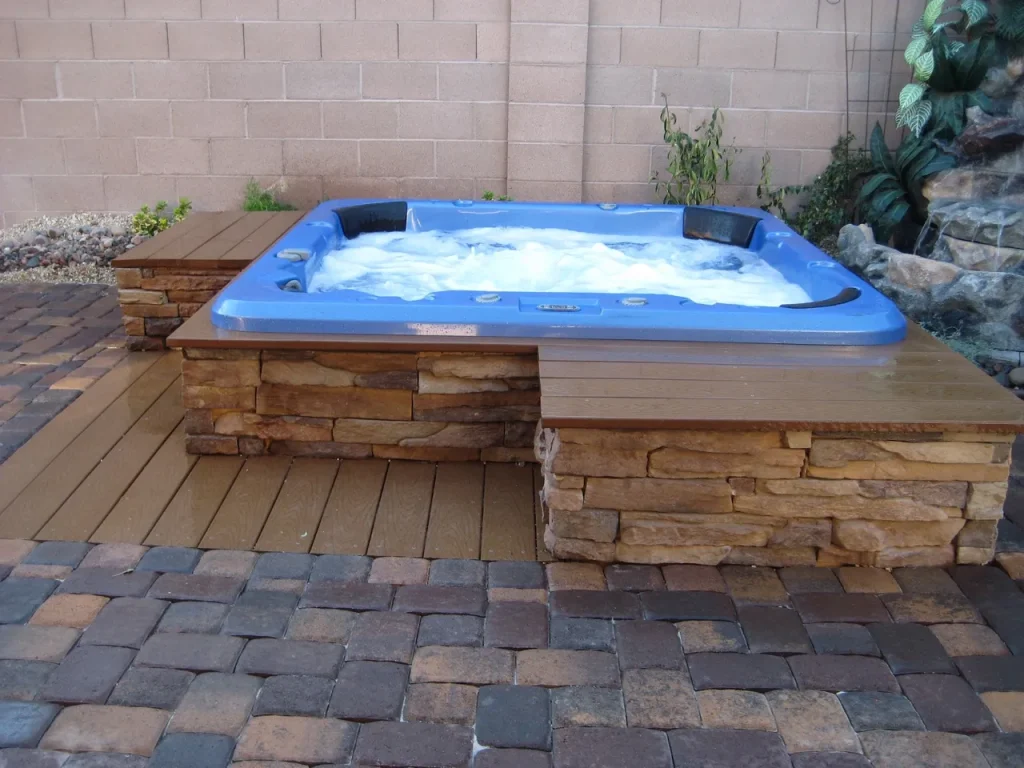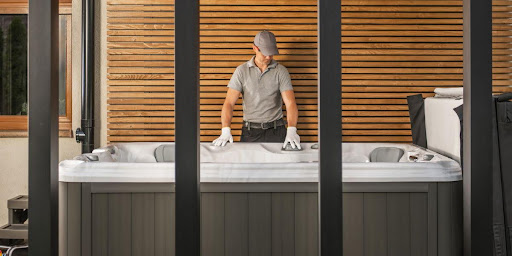Maintaining high hot tub water quality is essential for both the longevity of your spa and your overall health. Without regular maintenance, hot tub water can become cloudy, harbor bacteria, and create an unpleasant soaking experience. Consistent hot tub maintenance ensures clean, clear water that is safe and enjoyable for everyone. Here’s how proper hot tub maintenance directly impacts water quality and helps keep your spa in top condition.
1. Balanced Water Chemistry
One of the most important aspects of hot tub water quality is maintaining balanced water chemistry. Testing your hot tub water regularly helps ensure that pH, alkalinity, and sanitizer levels remain within the proper range. Imbalanced water can lead to issues like scale buildup, corrosion, and the growth of harmful bacteria. Regularly balancing your water prevents these problems and keeps the water clean and clear.
Maintaining the right pH level (between 7.2 and 7.8) ensures that sanitizers like chlorine or bromine work effectively, keeping your hot tub water free from contaminants. High pH levels can cause scaling, while low pH can corrode spa components. By keeping these levels balanced, you protect both your hot tub and your health.
2. Effective Filtration
Your hot tub’s filtration system is essential for maintaining good water quality. Over time, debris like dirt, oils, and leaves can accumulate in your hot tub, causing the water to become cloudy and unappealing. Regularly cleaning your filters ensures that they function properly, removing contaminants and keeping the water clear.
For optimal performance, filters should be rinsed every 2-4 weeks and deep cleaned with a filter cleaner every few months. Replacing your filters annually or as recommended by the manufacturer also ensures that your filtration system continues to operate efficiently, helping to maintain clean and safe water.
3. Routine Shocking
Shocking your hot tub water is a crucial step in hot tub maintenance that significantly improves water quality. Shocking involves adding a higher dose of sanitizer to the water to eliminate any lingering bacteria, organic contaminants, and other impurities that regular sanitizing may miss. This process also helps prevent cloudy water and unpleasant odors, ensuring that your water stays fresh and inviting.
A weekly shock treatment keeps your hot tub water in prime condition, particularly after heavy use or when contaminants like oils from sunscreen or lotions build up in the water.
4. Regular Draining and Refilling
Even with diligent hot tub maintenance, water can accumulate dissolved solids over time that cannot be removed through filtration and chemical treatments alone. Draining and refilling your hot tub every 3-4 months is a vital step in maintaining high water quality. This allows you to start with fresh, clean water, ensuring that your spa remains hygienic and comfortable to use.
When draining your hot tub, take the opportunity to clean the spa shell and jets thoroughly. Removing any grime or buildup from these areas prevents future contamination of the water.
5. Preventing Algae and Bacterial Growth
Without regular maintenance, hot tubs can become a breeding ground for algae and bacteria, both of which can severely impact water quality. Proper water care, including regular sanitizing, shocking, and filtration, prevents the growth of harmful microorganisms. Consistently maintaining your hot tub’s water chemistry and cleaning schedule ensures that the water remains free of algae and bacteria, promoting a healthy and safe soaking environment.
Conclusion
Proper hot tub maintenance plays a crucial role in improving and maintaining hot tub water quality. By regularly balancing water chemistry, cleaning filters, shocking the water, and draining and refilling your spa, you can enjoy crystal-clear water and a safer, more pleasant spa experience.
Contact us at 702-884-5424 or click here to be contacted to schedule!



